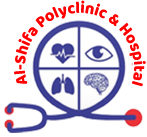Vitiligo is a chronic skin condition characterized by the loss of pigmentation, leading to white patches on various parts of the body. This occurs when melanocytes, the cells responsible for skin color, are damaged or cease functioning.
Types of Vitiligo
1. Non-Segmental Vitiligo (NSV)
- Description: The most common type, featuring symmetrical white patches on both sides of the body.
- Common Areas: Hands, arms, skin around body openings like eyes, knees, elbows, and feet.
- Prevalence: Accounts for about 90% of vitiligo cases.
2. Segmental Vitiligo (SV)
- Description: Appears in one area or section on one side of the body.
- Common in: Younger individuals; tends to start earlier in life.
- Prevalence: Less common than NSV.
3. Focal Vitiligo
- Description: A patternless form confined to one or a few body parts.
4. Universal Vitiligo
- Description: Extremely rare, affecting almost all of the body’s skin.
Causes of Vitiligo
- Autoimmune Disorder: The immune system mistakenly attacks melanocytes.
- Hereditary Factors: A family history of vitiligo or related autoimmune conditions may increase risk.
- Neurogenic Factors: Neurochemicals from nerves might harm melanocytes.
- Oxidative Stress: An imbalance between free radicals and antioxidants might damage melanocytes.
- Environmental Triggers: Factors like sunlight, wounds, or burns may trigger the condition in genetically predisposed individuals.
- Stress: Physical or emotional stress may precipitate or worsen vitiligo.
Risk Factors
- Family History: Increased likelihood if a family member has vitiligo.
- Skin Trauma: Physical injuries or severe sunburns can trigger the Koebner phenomenon.
- Exposure to Chemicals: Certain chemicals, particularly in industrial settings or cosmetics, may cause or worsen vitiligo.
- Sunburn: Extensive sunburn can lead to new or spreading patches.
- Age: Typically manifests before age 30.
Symptoms
- White Spots: White, milky patches primarily on the face, hands, arms, feet, and lips.
- Premature Greying: Early greying of hair in areas like beard, eyebrows, lashes, and scalp.
- Mucous Membrane Colour Loss: Decreased pigmentation in the inside of the nose and mouth.
- Loss of Retina Colour: Rare loss of pigmentation in the retina.
- Colour Loss Around Body Openings: Affects areas around the eyes, nose, mouth, navel, and genitalia.
- Patterns: Often symmetrical patches on both sides of the body.
- Segmental Patterns: Limited to one side or section of the body.
- Slow Progression: Patches may spread slowly or remain stationary.
Diagnosis
- Clinical Examination: Assessment of symptoms and medical history.
- Wood’s Lamp: UV light used to detect pigment loss.
- Skin Biopsy: Rarely used, involves examining a skin sample under a microscope.
- Blood Tests: To check for related autoimmune diseases.
Treatment Options
- Topical Corticosteroids: Creams or ointments to help restore color.
- Topical Calcineurin Inhibitors: Medications like tacrolimus or pimecrolimus for the face and neck.
- Phototherapy: Controlled UVB light exposure to stimulate melanocytes.
- Excimer Laser: Focused phototherapy for specific areas.
- Depigmentation: Lightening unaffected skin for a more uniform appearance.
- Skin Grafting: Transplantation of pigment-deficient skin to affected areas.
- Micropigmentation (Tattooing): Injecting pigment into white areas.
- Medication: Oral drugs like immunosuppressants or corticosteroids for severe cases.
Impact on Mental and Emotional Health
Vitiligo can significantly affect emotional well-being and self-esteem. Stress management techniques, counseling, and support groups can be beneficial.
Investigations and Progress
Ongoing research aims to develop new treatments and better understand the autoimmune and genetic aspects of vitiligo. Future therapies may include advancements in regenerative medicine and cell-based treatments.
Conclusion
Vitiligo is a persistent skin disorder resulting in white patches due to pigmentation loss. While its exact cause is not fully understood, environmental, autoimmune, and genetic factors are believed to contribute. Though it does not cause physical pain, it can impact emotional health. Management includes various treatments, and research is focused on improving understanding and developing new therapies.
